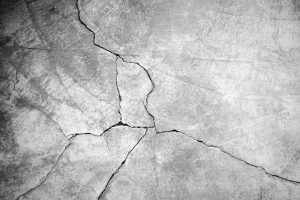Do you live in a neighborhood where the teen down the street likes to throw house parties? Or where the kid next door is learning drums? Or perhaps you’re just way too close to a busy road? All these things have one thing in common: noise.
Noise pollution has been scientifically proven to be stressful. And ideally, at home, you shouldn’t be experiencing stress. But because you can’t control everything that’s going on outside your house, you can try to control the noise you receive from inside the house, instead. Here’s how:
BIBS Insulation
No, the job of insulation does not stop at trapping dry air and heat. It goes beyond that. According to a Kansas City-based blown-in-blanket insulation (BIBS) specialist, a blow-in blanket system also helps absorb noise.
Fiberglass BIBS can fit snugly between walls and ceiling joists, and they perform well in curtailing noise. They do so by reducing the transfer of vibration (sound) through the air. Specifically, fiberglass is excellent in preventing, or at least, minimizing sound from bouncing back or vibrating through the next room.
Acoustical Caulks
 Have you checked for gaps and leaks? Unlike light, sound can travel through solids, and more so through materials with crevices or cracks. Multiple holes on your walls can negate all your soundproofing efforts. Here’s what you should do to avoid wasting all the work that went into blocking out noise: plug acoustical caulks.
Have you checked for gaps and leaks? Unlike light, sound can travel through solids, and more so through materials with crevices or cracks. Multiple holes on your walls can negate all your soundproofing efforts. Here’s what you should do to avoid wasting all the work that went into blocking out noise: plug acoustical caulks.
Typically a latex-based, rubber-like material, acoustical calks or sealants can reduce sound transmission by controlling the vibration that goes through the cracks on solid surfaces. Apply this sealant to major sound leaks on your walls, ceiling, and floor.
Carpet
Every step you take, I’ll be hearing you. Is this the story of your life? It doesn’t have to be anymore. The right carpet doesn’t only give your home a cozy vibe, but it also decreases the noise made by footsteps on hardwood floors.
For instance, you can minimize the sound of walking by adding a padded carpet on your hardwood floors. Padded rugs are typically made of dense felt fiber fabric material that prevents pressure (of footsteps, for instance) from directly reaching the floor, thereby absorbing the sounds from that pressure.
Fences
More than just for security and privacy purposes, fences are a great solution to the traffic noise problem you’re having at home. The fence has to be solid and thick enough to block the sound of cars and lawn mowers nearby. But it doesn’t have to be a six-feet solid wall that feels like a prison. It can be a 2.5 feet high dry-laid masonry fence, instead.
However, if you want to use a wood material, you can still opt for a wooden fence. Just make sure that you build it high and stable with no gaps between each board.
Unwanted noise is not just a hassle, but it’s also a cause of stress and distraction. The above-mentioned can help you turn your environment’s volume down a bit. So if you’re dealing with neighbors who mow their lawns at six in the morning or roommates who stomp their feet when their walking, perhaps it’s time to soundproof your home.

